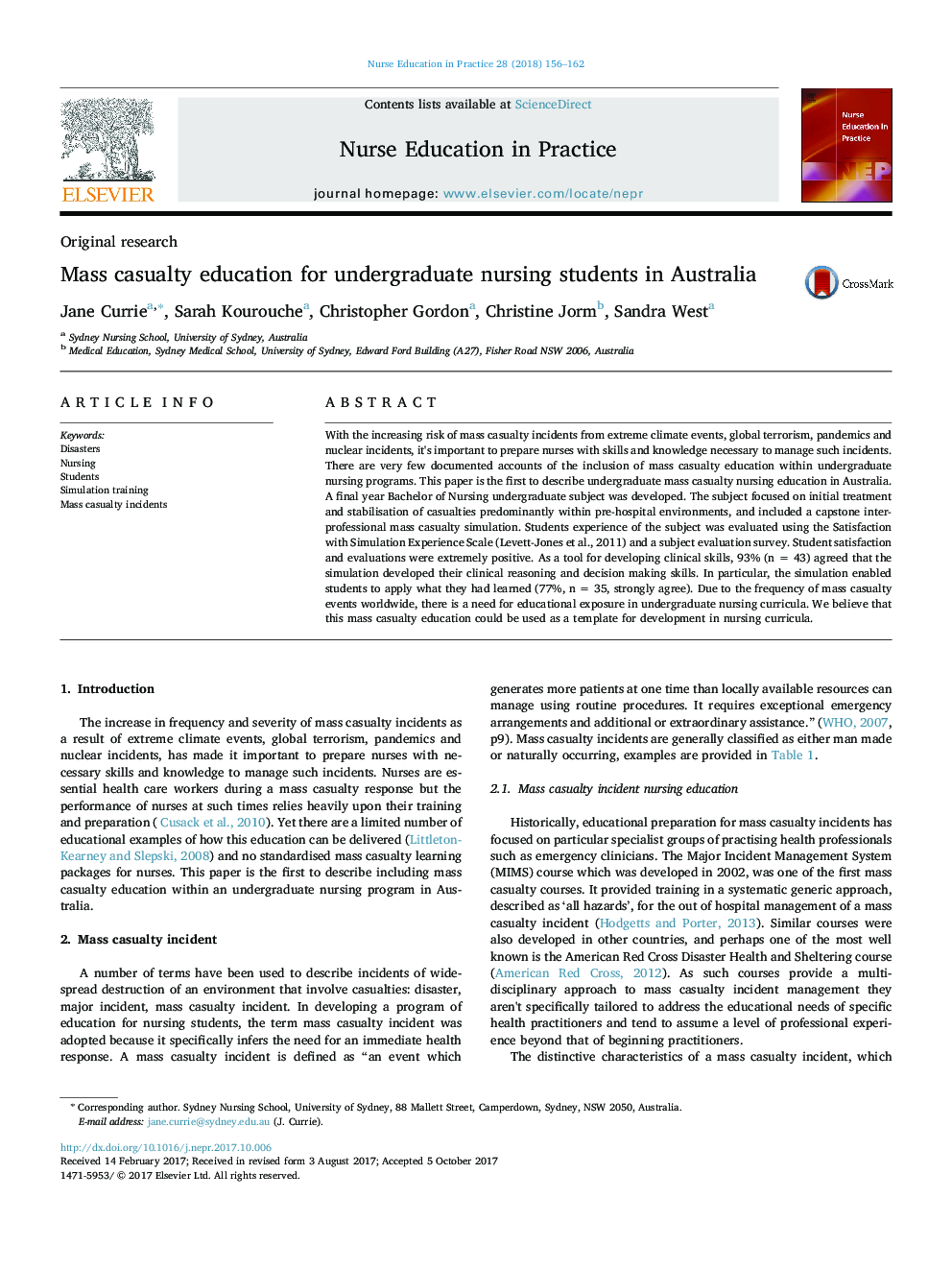| Article ID | Journal | Published Year | Pages | File Type |
|---|---|---|---|---|
| 6846379 | Nurse Education in Practice | 2018 | 7 Pages |
Abstract
With the increasing risk of mass casualty incidents from extreme climate events, global terrorism, pandemics and nuclear incidents, it's important to prepare nurses with skills and knowledge necessary to manage such incidents. There are very few documented accounts of the inclusion of mass casualty education within undergraduate nursing programs. This paper is the first to describe undergraduate mass casualty nursing education in Australia. A final year Bachelor of Nursing undergraduate subject was developed. The subject focused on initial treatment and stabilisation of casualties predominantly within pre-hospital environments, and included a capstone inter-professional mass casualty simulation. Students experience of the subject was evaluated using the Satisfaction with Simulation Experience Scale (Levett-Jones et al., 2011) and a subject evaluation survey. Student satisfaction and evaluations were extremely positive. As a tool for developing clinical skills, 93% (n = 43) agreed that the simulation developed their clinical reasoning and decision making skills. In particular, the simulation enabled students to apply what they had learned (77%, n = 35, strongly agree). Due to the frequency of mass casualty events worldwide, there is a need for educational exposure in undergraduate nursing curricula. We believe that this mass casualty education could be used as a template for development in nursing curricula.
Related Topics
Health Sciences
Nursing and Health Professions
Nursing
Authors
Jane Currie, Sarah Kourouche, Christopher Gordon, Christine Jorm, Sandra West,
